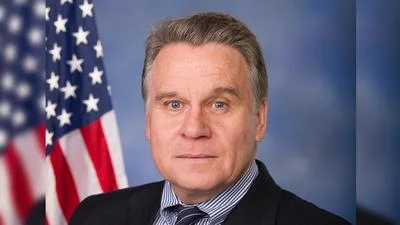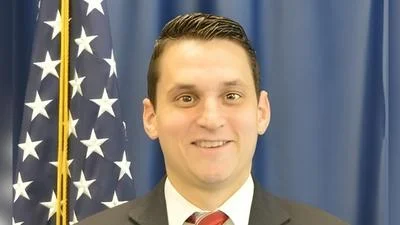The Congressional Record is a unique source of public documentation. It started in 1873, documenting nearly all the major and minor policies being discussed and debated.
“STREAMLINING ENERGY EFFICIENCY FOR SCHOOLS ACT OF 2017” mentioning the U.S. Dept. of Energy was published in the House of Representatives section on pages H4825-H4826 on June 12, 2017.
The Department oversees energy policies and is involved in how the US handles nuclear programs. Downsizing the Federal Government, a project aimed at lowering taxes and boosting federal efficiency, said the Department's misguided energy regulations have caused large losses to consumers for decades.
The publication is reproduced in full below:
STREAMLINING ENERGY EFFICIENCY FOR SCHOOLS ACT OF 2017
Mr. UPTON. Mr. Speaker, I move to suspend the rules and pass the bill
(H.R. 627) to amend the Energy Policy and Conservation Act to provide for the dissemination of information regarding available Federal programs relating to energy efficiency projects for schools, and for other purposes.
The Clerk read the title of the bill.
The text of the bill is as follows:
H.R. 627
Be it enacted by the Senate and House of Representatives of the United States of America in Congress assembled,
SECTION 1. SHORT TITLE.
This Act may be cited as the ``Streamlining Energy Efficiency for Schools Act of 2017''.
SEC. 2. COORDINATION OF ENERGY RETROFITTING ASSISTANCE FOR
SCHOOLS.
Section 392 of the Energy Policy and Conservation Act (42 U.S.C. 6371a) is amended by adding at the end the following:
``(e) Coordination of Energy Retrofitting Assistance for Schools.--
``(1) Definition of school.--Notwithstanding section 391(6), for the purposes of this subsection, the term
`school' means--
``(A) an elementary school or secondary school (as defined in section 9101 of the Elementary and Secondary Education Act of 1965 (20 U.S.C. 7801));
``(B) an institution of higher education (as defined in section 102(a) of the Higher Education Act of 1965 (20 U.S.C. 1002(a)));
``(C) a school of the defense dependents' education system under the Defense Dependents' Education Act of 1978 (20 U.S.C. 921 et seq.) or established under section 2164 of title 10, United States Code;
``(D) a school operated by the Bureau of Indian Affairs;
``(E) a tribally controlled school (as defined in section 5212 of the Tribally Controlled Schools Act of 1988 (25 U.S.C. 2511)); and
``(F) a Tribal College or University (as defined in section 316(b) of the Higher Education Act of 1965 (20 U.S.C. 1059c(b))).
``(2) Establishment of clearinghouse.--The Secretary, acting through the Office of Energy Efficiency and Renewable Energy, shall establish a clearinghouse to disseminate information regarding available Federal programs and financing mechanisms that may be used to help initiate, develop, and finance energy efficiency, distributed generation, and energy retrofitting projects for schools.
``(3) Requirements.--In carrying out paragraph (2), the Secretary shall--
``(A) consult with appropriate Federal agencies to develop a list of Federal programs and financing mechanisms that are, or may be, used for the purposes described in paragraph (2); and
``(B) coordinate with appropriate Federal agencies to develop a collaborative education and outreach effort to streamline communications and promote available Federal programs and financing mechanisms described in subparagraph
(A), which may include the development and maintenance of a single online resource that includes contact information for relevant technical assistance in the Office of Energy Efficiency and Renewable Energy that States, local education agencies, and schools may use to effectively access and use such Federal programs and financing mechanisms.''.
The SPEAKER pro tempore. Pursuant to the rule, the gentleman from Michigan (Mr. Upton) and the gentlewoman from Colorado (Ms. DeGette) each will control 20 minutes.
The Chair recognizes the gentleman from Michigan.
General Leave
Mr. UPTON. Mr. Speaker, I ask unanimous consent that all Members may have 5 legislative days to revise and extend their remarks and include extraneous material on H.R. 627.
The SPEAKER pro tempore. Is there objection to the request of the gentleman from Michigan?
There was no objection.
Mr. UPTON. Mr. Speaker, I yield myself such time as I may consume.
Mr. Speaker, this bill, H.R. 627, is an important bill that would help the Nation's schools make use of existing Federal programs to actually reduce their energy use. There currently are a number of such programs that help schools undertake projects that improve energy efficiency. Unfortunately, school districts don't always have the know-
how to navigate the complexities of the Federal system and take full advantage of these programs.
The bill creates a simple one-stop shop to get all the needed information and help school districts participate more fully in these programs. The bottom line is that the Nation's schools will, in fact, reduce their energy costs.
As it is, energy use in American K-12 schools totals $6 billion every year, and reducing this figure can certainly save taxpayer dollars or free up funds that schools can use on things other than energy bills.
This bill, H.R. 627, has no cost since it merely sets up a system under which existing school energy efficiency programs can work better.
A similar bill was passed under suspension of the rules at the end of the last Congress, and I would hope that we can do it today, at the beginning of this Congress, so that the Senate can follow suit and get this to the President's desk.
Mr. Speaker, I reserve the balance of my time.
Ms. DeGETTE. Mr. Speaker, I yield myself as much time as I may consume.
Mr. Speaker, I want to voice my strong support for H.R. 627, Mr. Cartwright's Streamlining Energy Efficiency for Schools Act. This is a great bill that will provide a coordinated structure for our Nation's schools to help them better navigate available Federal programs and financing options.
Across the country, K-12 school districts spend literally billions of dollars on their energy bills each year while an estimated 14 million American children attend deteriorating public schools. By upgrading these systems, we can increase efficiency and focus school funding to achieve better educational outcomes.
This legislation passed the House previously with broad bipartisan support, and I urge everybody to support it.
Mr. Speaker, I yield such time as he may consume to the gentleman from Pennsylvania (Mr. Cartwright), the author of the bill.
Mr. CARTWRIGHT. Mr. Speaker, I thank the leadership and Chairman Upton for bringing this bill up under suspension today, and I thank the gentlewoman from Colorado for yielding me the time.
I thank the entire Energy and Commerce Committee, which, once again, voted unanimously in committee in favor of this bill--a bill that has passed the House twice under suspension in each of the past two Congresses. Both times it passed during the final days of the Congress, and the Senate did not have a chance to take the bill up. I am glad the House is considering it now in plenty of time for the Senate to consider it and act.
I would also thank Congressman Peter Welch from Vermont for his leadership on the bill. It is no secret that he is one of the great champions in the House on the issue of energy efficiency, and it has been my pleasure to work with him.
Mr. Speaker, so many schools across the country are in need of upgrades and improvements to their facilities. In its most recent 2017 Infrastructure Report Card, the American Society of Civil Engineers gave the condition of our Nation's schools a grade of D-plus.
As school administrators undertake badly needed improvements, they have an opportunity to substantially improve their facilities' energy efficiency, producing benefits for both the environment and the economy. In reducing their energy bills, schools can put the savings to use on other educational priorities.
According to the EPA and the Department of Energy, K-12 school districts nationwide spend approximately $8 billion on their energy bills every year--second only to personnel costs--exceeding the costs of textbooks and supplies. An estimated $2 billion of that cost could be saved by improving energy efficiency, an amount that could pay for, for example, 40 million textbooks.
Energy expenses are one of the few costs that can be reduced while at the same time improving classroom instruction. In fact, high-
performance schools can lower a school district's operating costs by up to 30 percent.
There are numerous Federal initiatives already available to schools to help them become more energy efficient, but these programs are spread across the Federal Government, making it challenging, time consuming, and costly for schools to identify and take full advantage of these programs.
In addition, schools can use several different general purpose programs for energy efficiency projects if they know how to locate and apply for them.
Introduced in the Senate as S. 383 by Senator Susan Collins, this bipartisan Streamlining Energy Efficiency for Schools Act aims to provide a coordinating structure for busy school administrators to help them better navigate available Federal programs and financing options.
This legislation does not spend an additional dime and keeps its decisionmaking authority with the States, the school boards, and local officials.
This bill establishes a clearinghouse through the Office of Energy Efficiency and Renewable Energy, which will disseminate information on Federal programs and financing mechanisms that may be used to develop energy efficiency, distributed generation, and energy retrofitting projects for schools.
The bill also directs the Office of Energy Efficiency and Renewable Energy to coordinate with Federal agencies and develop an outreach effort to streamline communications and promote available Federal programs. Such outreach may include a single website where school officials can learn more about the relevant programs.
Overburdened school administrators should not have to spend hours and hours wading through the Federal bureaucracy as they look for ways to improve energy efficiency. This commonsense legislation will ensure that schools can more easily take advantage of existing energy efficiency programs.
It is a strategic and cost-saving investment to relieve the fiscal pressure felt by school districts across the country, supported by overburdened homeowners, while bringing us closer to energy security in America.
Mr. Speaker, I urge my colleagues to pass this bill.
Mr. UPTON. Mr. Speaker, I would urge my colleagues to support this great, bipartisan bill, and I yield back the balance of my time.
Ms. DeGETTE. Mr. Speaker, I yield back the balance of my time.
The SPEAKER pro tempore. The question is on the motion offered by the gentleman from Michigan (Mr. Upton) that the House suspend the rules and pass the bill, H.R. 627.
The question was taken; and (two-thirds being in the affirmative) the rules were suspended and the bill was passed.
A motion to reconsider was laid on the table.
____________________








